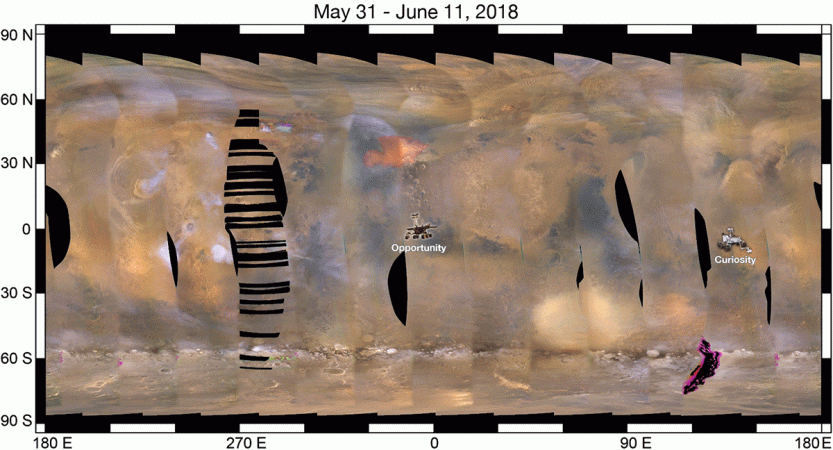
There is a massive storm raging on Mars right now and it is reported to be about the size of continental North America. Caught in the middle of this massive sandstorm is the overworked, yet remarkably resilient Opportunity rover.
Apart from being one the largest storms that NASA has encountered in its time on Mars, it is also one of the densest, notes a report by the space agency.
The storm is so severe that Opportunity has suspended all its missions and hunkered down, waiting for the storm to pass. While this could spell the end of the rover, it has presented scientists with a unique opportunity to learn about Martian weather from its three orbiters circling Mars.
Now, NASA says that even Curiosity, currently exploring an ancient lake bed on Gale crater is witnessing an increase in the levels of dust.
"This is the ideal storm for Mars science," said Jim Watzin, director of NASA's Mars Exploration Program at the agency's headquarters in Washington.

Dust storms are a common feature on Mars, notes the report. They can, at times balloon into regional storms and sometimes they can keep expanding until they completely envelop the entire planet. Planet-wide storms on Mars happen every three to four Martian years — about six to eight Earth years. Lasting weeks, if not months, the last global storm was seen in 2007, says NASA.
"We have a historic number of spacecraft operating at the Red Planet. Each offers a unique look at how dust storms form and behave—knowledge that will be essential for future robotic and human missions," Watzin added.
This storm, which has been gathering for weeks now has grown to about 35 million sq km, covering about one-quarter of the planet. "Each observation of these large storms brings us closer to being able to model these events - and maybe, someday, being able to forecast them," said Rich Zurek, chief scientist for the Mars Program Office at NASA's Jet Propulsion Laboratory.
"That would be like forecasting El Niño events on Earth, or the severity of upcoming hurricane seasons."

















